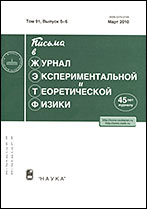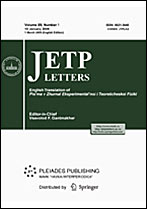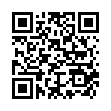|
This article is cited in 2 scientific papers (total in 2 papers)
QUANTUM INFORMATION SCIENCE
On a new attack on quantum key distribution: joint unambiguous measurements of probe states and the PNS attack on information states
S. N. Molotkovabc
a Institute of Solid State Physics, Russian Academy of Sciences, Chernogolovka, Moscow region, 142432 Russia
b Academy of Cryptography of the Russian Federation, Moscow, 121552 Russia
c Center of Quantum Technologies, Moscow State University, Moscow, 119899 Russia
Abstract:
A new attack on the quantum key distribution is proposed involving joint collective unambiguous measurements of reflected probe states from an intensity modulator and photon number splitting (PNS) measurements, i.e., nondestructive measurements of the number of information photons in the quantum communication channel. This attack does not change the relative statistics of photocounts of states with different numbers of photons, does not lead to errors on the receiver side, and, thereby, is not detected by any of known methods, including the modified decoy state method. The attack results only in additional losses in the communication channel, which are not “controlled” by the decoy state method. The dependence of introduced losses on the intensity of reflected probe states is estimated. The critical level of losses depends on a particular physical implementation of the quantum cryptography system, which determines the upper bound of the intensity of reflected probe states. The knowledge of this bound is fundamentally necessary to ensure the security of keys. The fact that the attack does not lead to errors on the receiver side and does not change the relative statistics of photocounts but only results in additional losses, which depend on the intensity according to the distinguishability of reflected probe states, does not mean that this attack transforms quantum cryptography systems from the type of cryptographic systems where the security of keys is guaranteed by fundamental quantum mechanical laws to the type of systems where this security is guaranteed by technical restrictions. Even in the presence of side channels of information leakage, the security of keys is still guaranteed by fundamental quantum mechanical restrictions on the distinguishability of states. A low level of distinguishability (“intensity”) of quantum states in side channels is naturally reached by technical tools.
Received: 11.08.2020
Revised: 15.08.2020
Accepted: 16.08.2020
Citation:
S. N. Molotkov, “On a new attack on quantum key distribution: joint unambiguous measurements of probe states and the PNS attack on information states”, Pis'ma v Zh. Èksper. Teoret. Fiz., 112:6 (2020), 401–411; JETP Letters, 112:6 (2020), 383–392
Linking options:
https://www.mathnet.ru/eng/jetpl6263 https://www.mathnet.ru/eng/jetpl/v112/i6/p401
|


| Statistics & downloads: |
| Abstract page: | 212 | | Full-text PDF : | 34 | | References: | 34 | | First page: | 13 |
|





 Contact us:
Contact us: Terms of Use
Terms of Use
 Registration to the website
Registration to the website Logotypes
Logotypes








 Citation in format
Citation in format 
